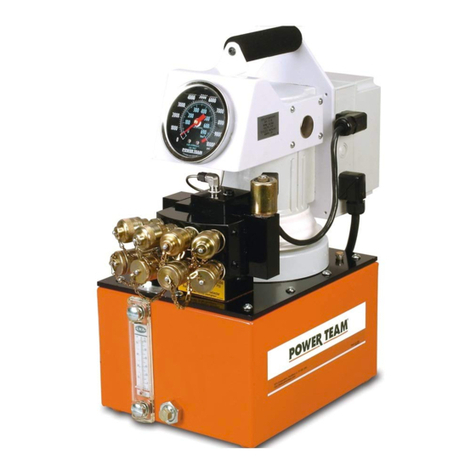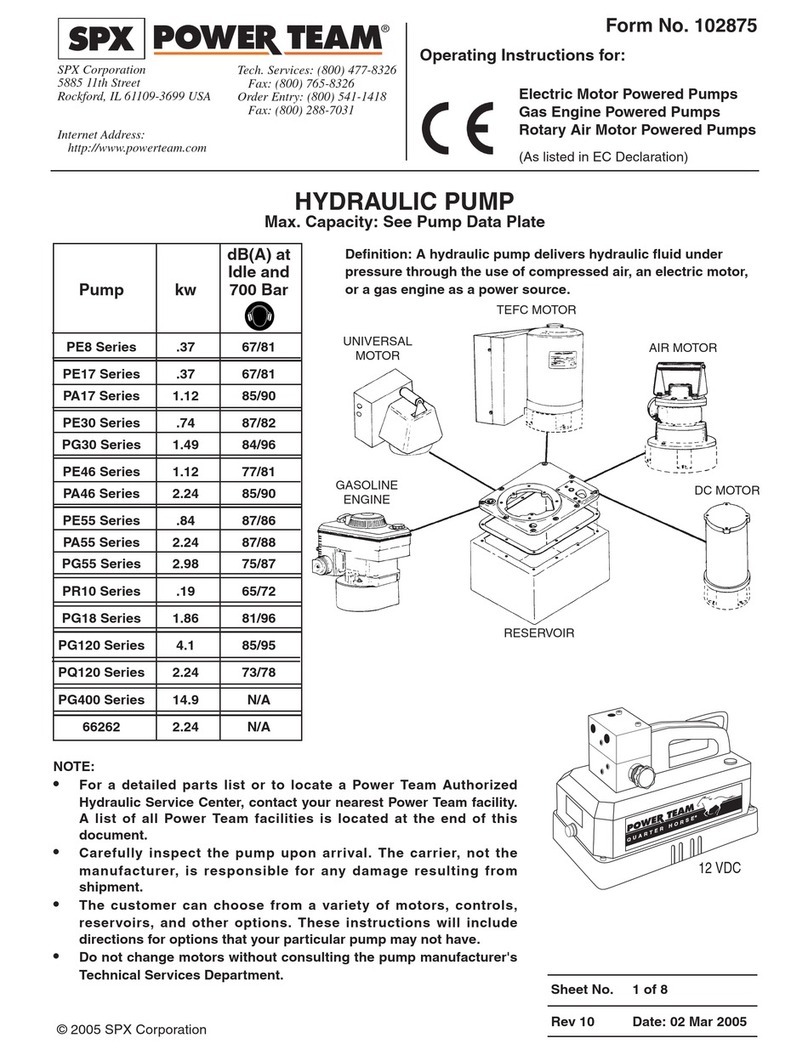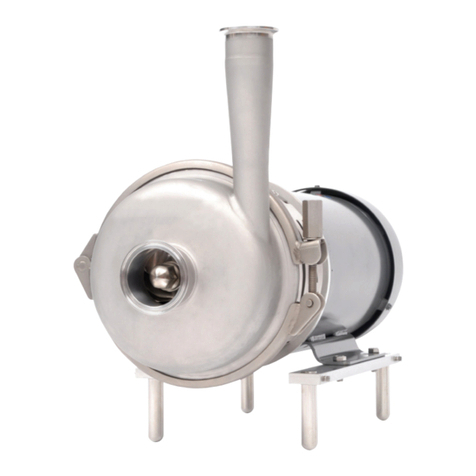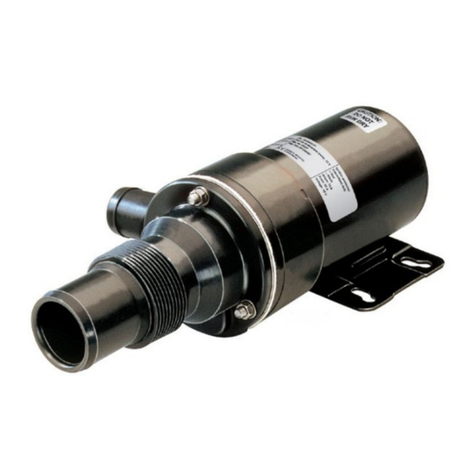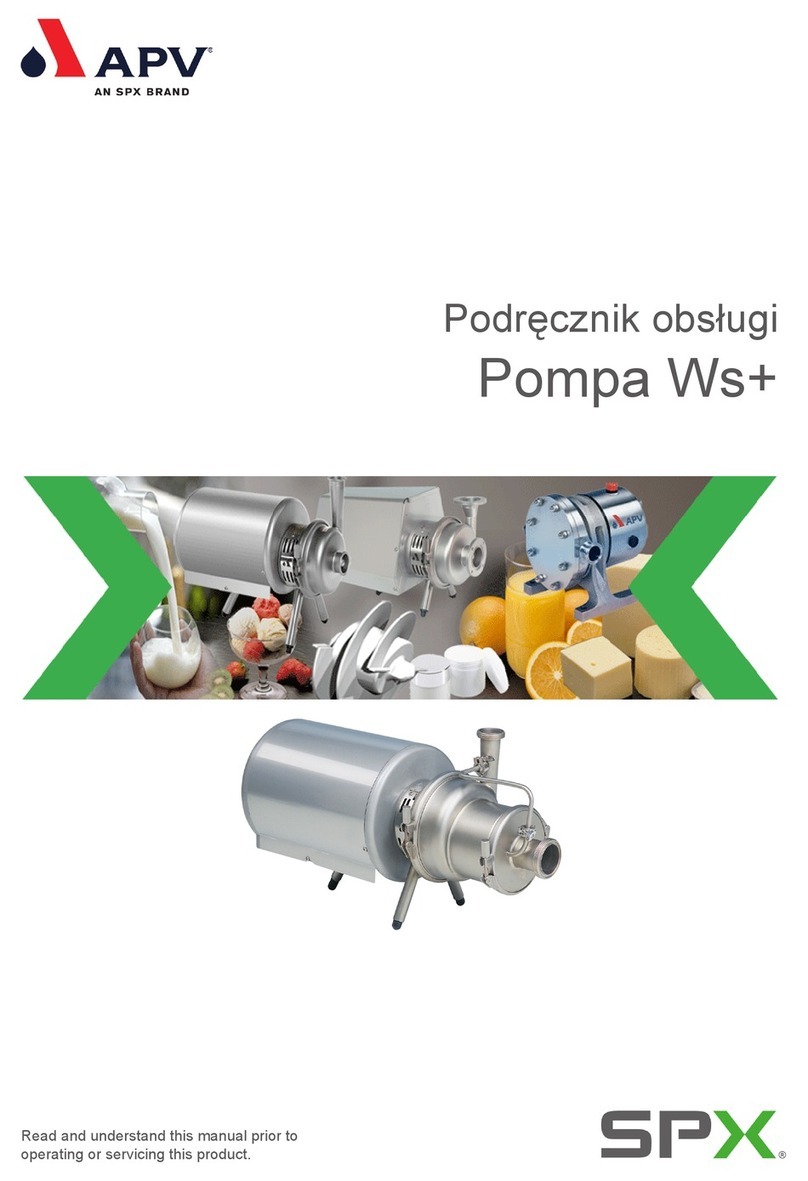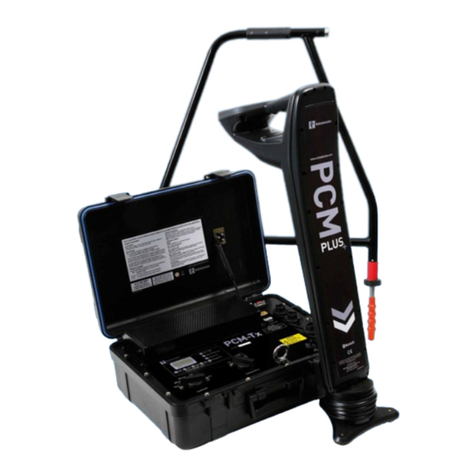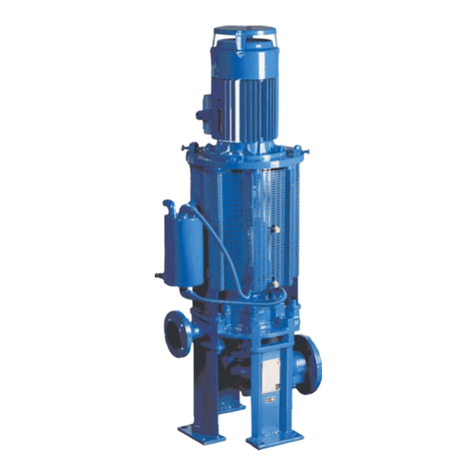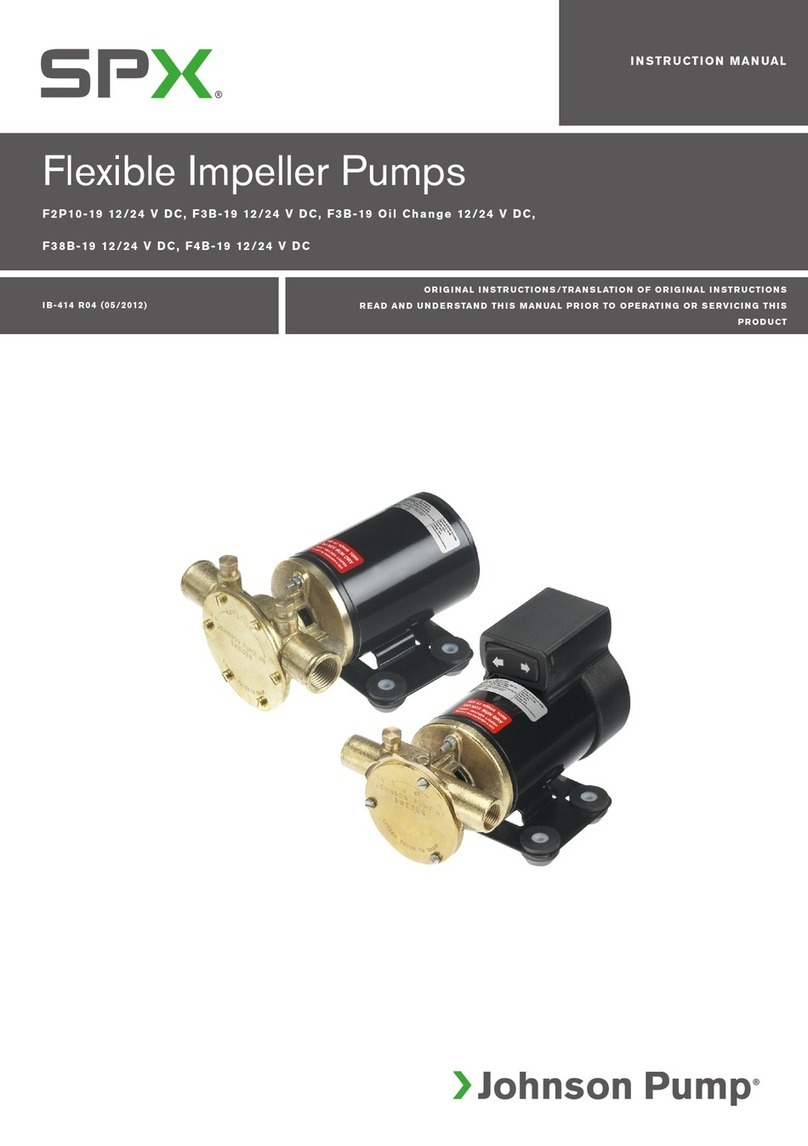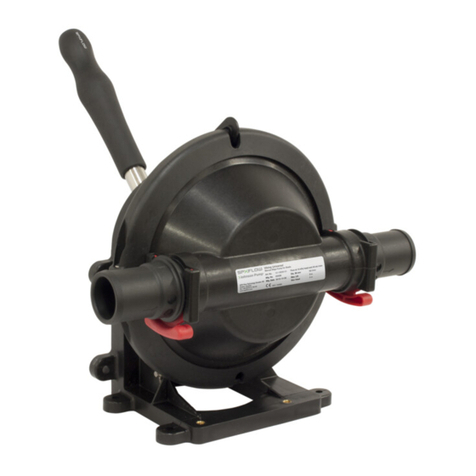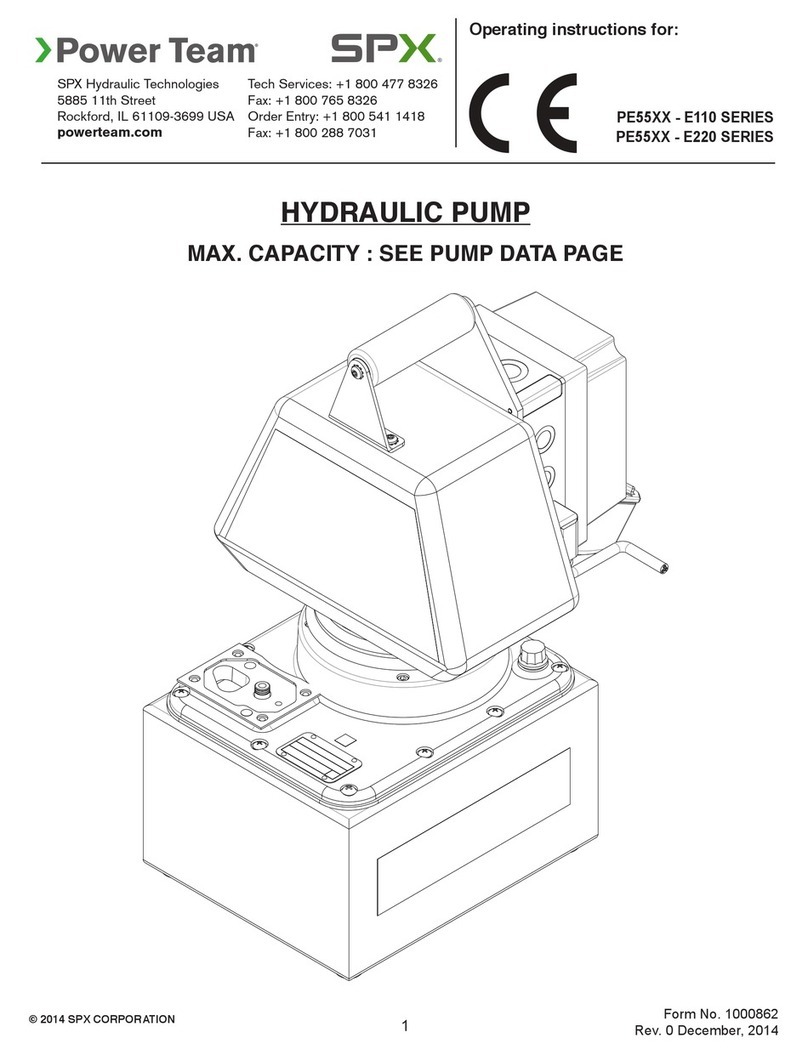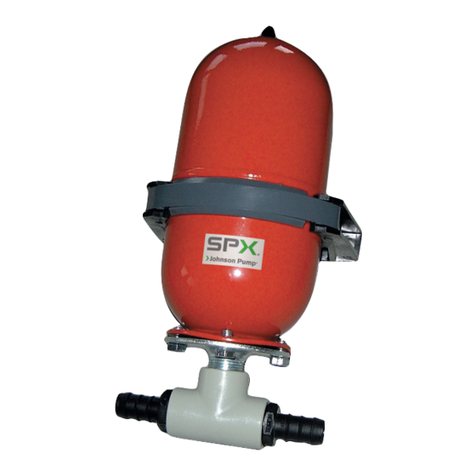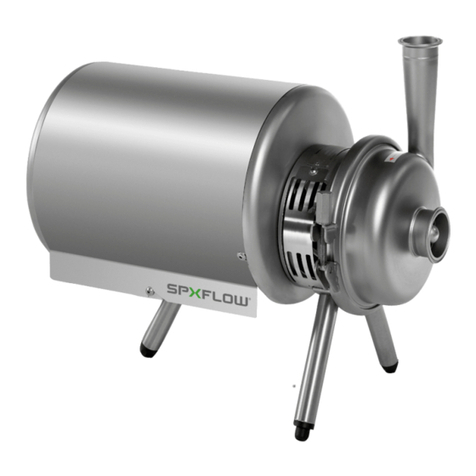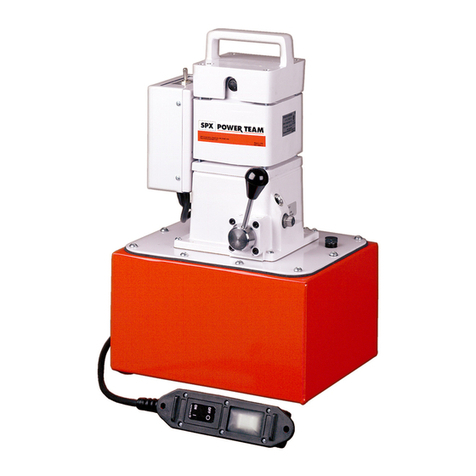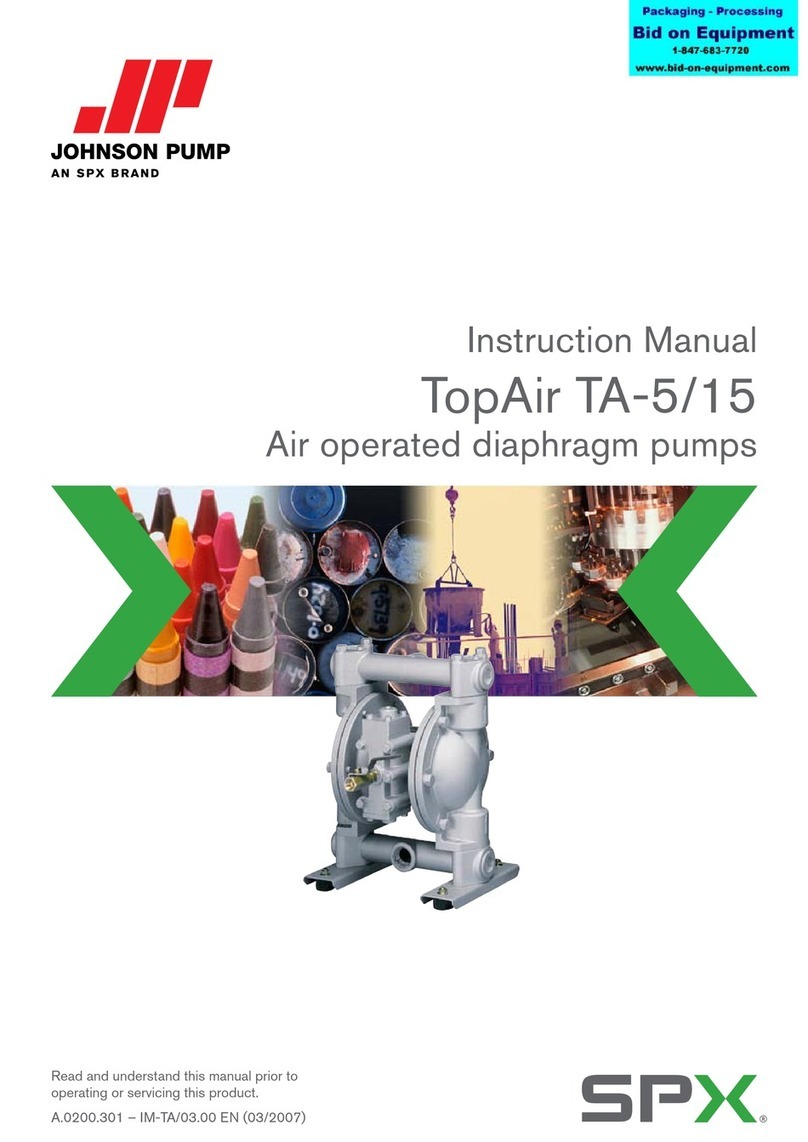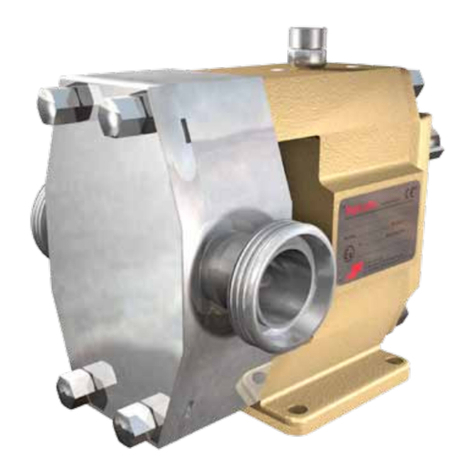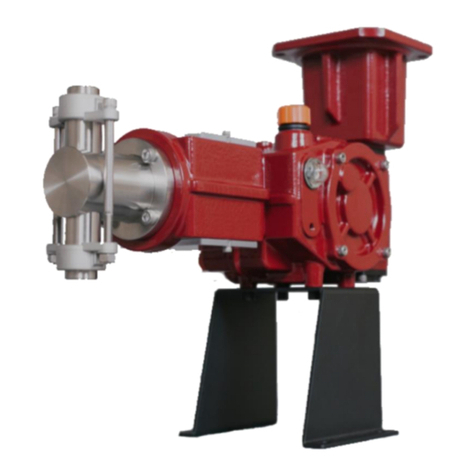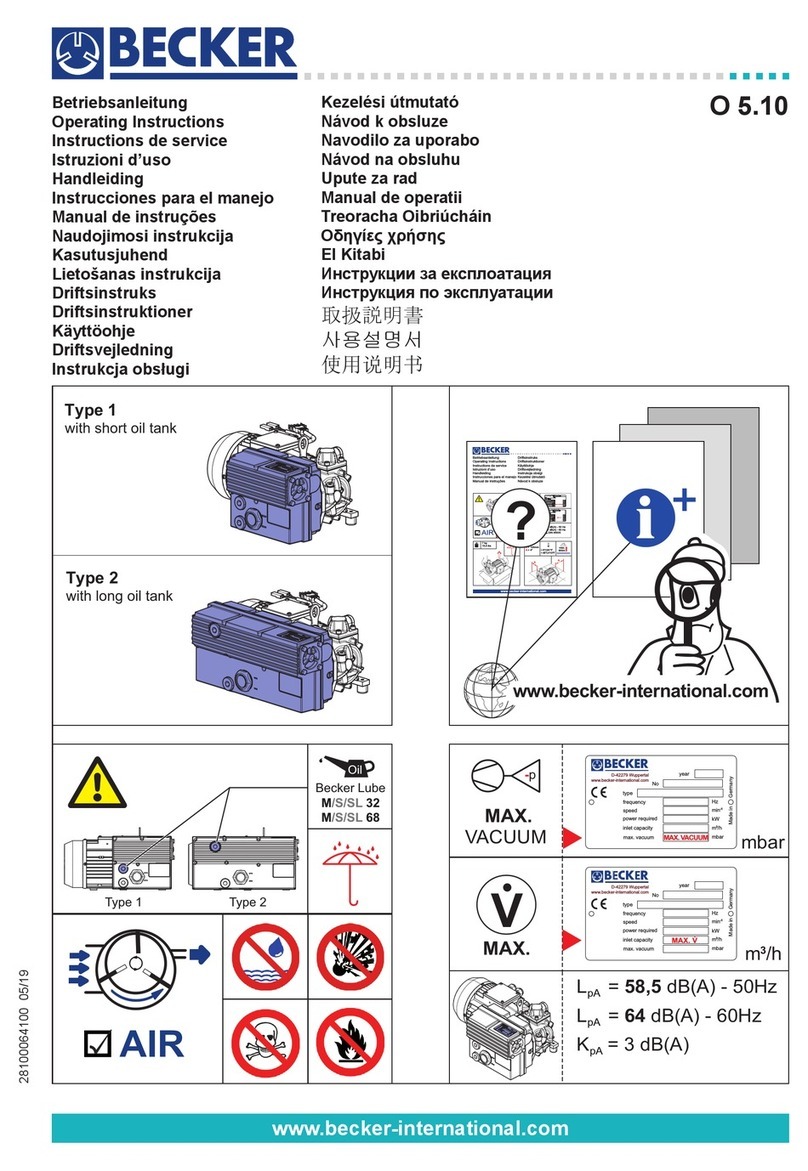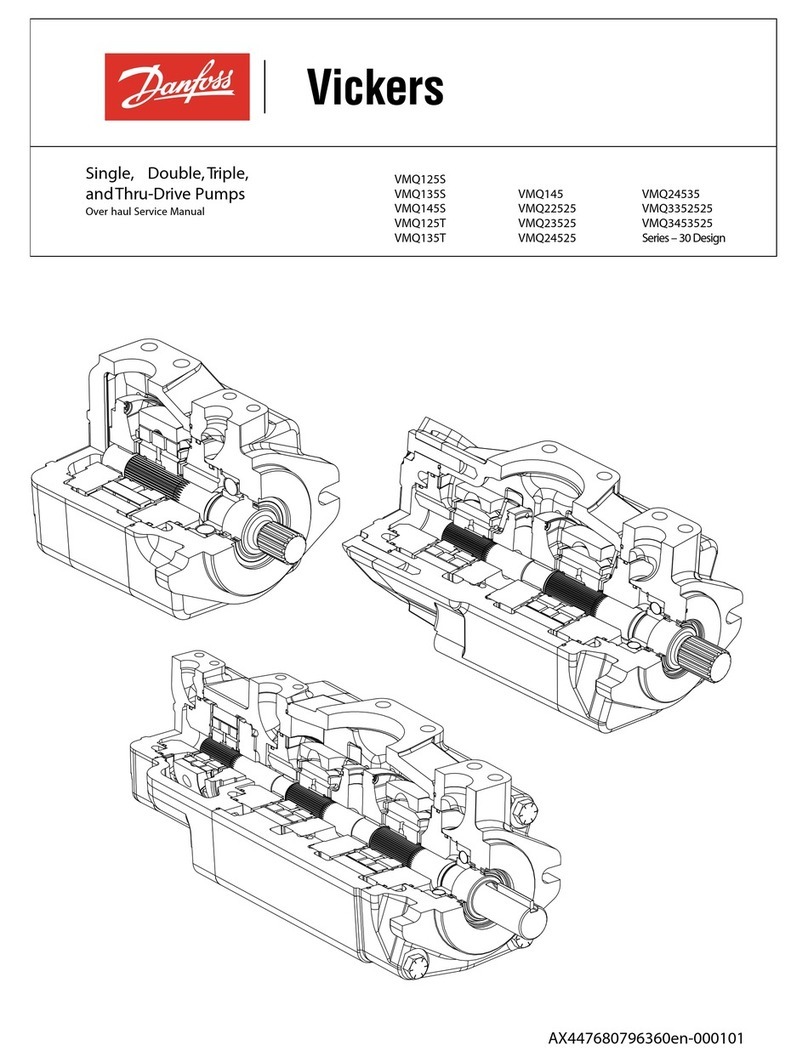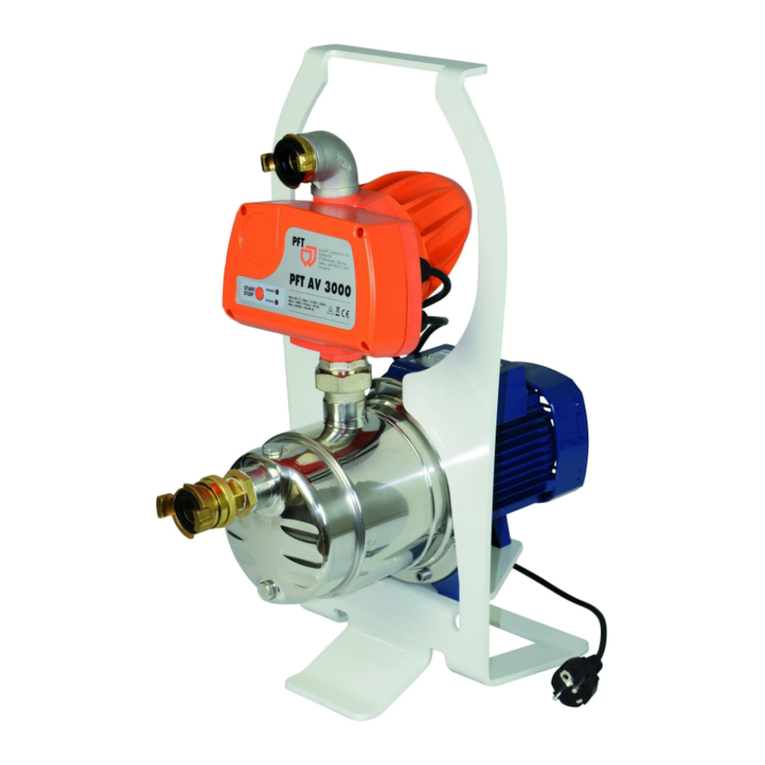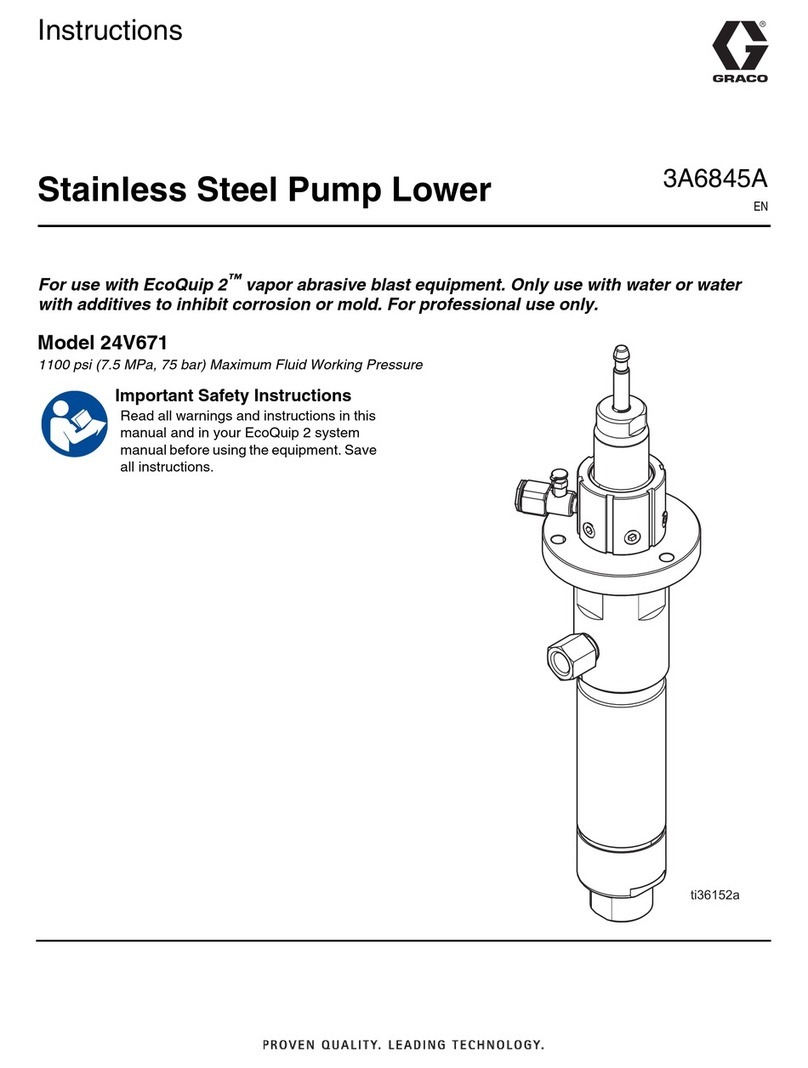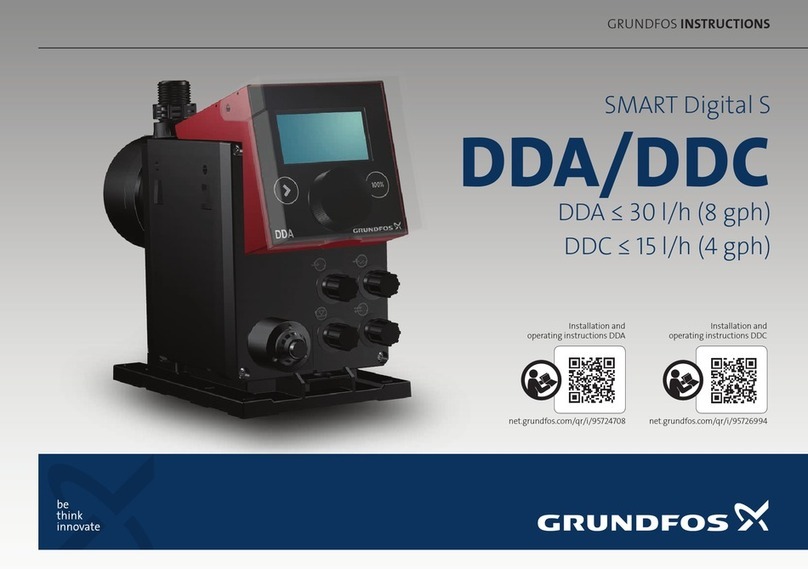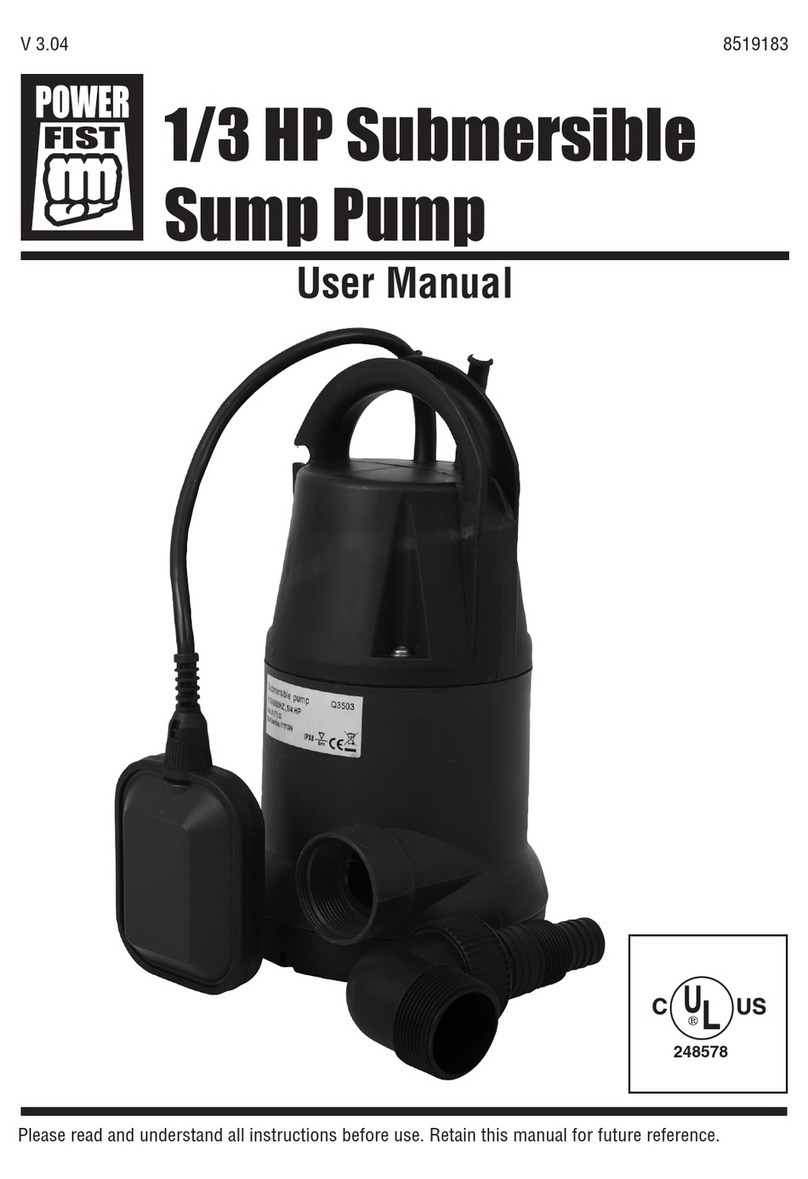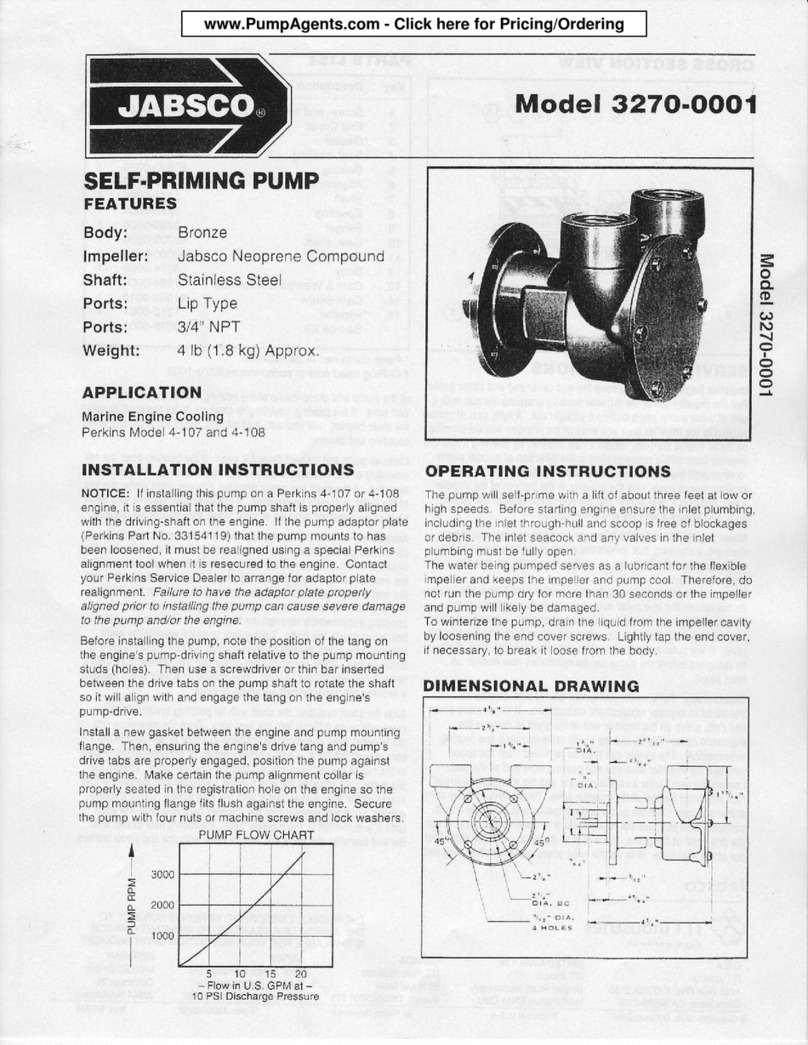
13
© SPX
Form No. 1000559
Rev. 0 February 3, 2012
Operating Instructions continued
Pressure Regulating Controls
To ensure accuracy and low pressure differential (approx. 20 Bar 300 PSI) throughout the pressure
range (69-690 Bar (1,000-10,000 PSI) depending on the pump model), the pressure switch should be
used with the pressure regulating valve. The pressure switch must be set at a pressure lower than the
pressure regulating valve to work correctly.
• The pressure regulating valve can be adjusted to bypass uid at a given pressure setting while the
pump continues to run.
• The pressure switch can be adjusted to stop the pump at a given pressure setting.
Adjusting The Pressure Regulating Valve (if equipped). All others are factory preset.
Note: For easy adjustment of the pressure regulating valve, always adjust the pressure by increasing to the
desired pressure setting.
1. Loosen the locknut on the pressure regulating valve.
2. Use a screwdriver to back out the adjusting screw a few turns in a counterclockwise direction. This
decreases the setting to a lower-than-desired pressure.
3. The pump must be completely connected. Set the motor control toggle switch on RUN, and push the
START button.
4. With the screwdriver, slowly turn the adjusting screw in a clockwise direction. This gradually
increases the pressure setting. When the desired pressure is reached, lock the adjusting screw in
position by tightening the locknut.
Notes:
• The pressure range is from 69-690 Bar (1,000-10,000 PSI), depending on the pump model.
• The pressure switch must be set at a higher pressure than working range to prevent shut down during
adjustment. It is also possible to bypass the pressure switch contacts by holding the start switch or
remote control switch so the motor runs continuously.
Adjusting The Pressure Switch
Generally, the pressure switch should be used with the pressure regulating valve. A pressure switch can
be used alone for operating electrical devices such as motors, solenoids, and relays, which are located
elsewhere in the circuit.
1. Loosen the locknut on the pressure switch, and turn the adjusting screw in a clockwise direction.
This increases the pressure setting to a higher than desired pressure.
2. Adjust the pressure regulating valve to the desired pressure setting by using the procedure
previously outlined.
3. With the pump running and bypassing fluid at the desired pressure, slowly turn the pressure switch
adjusting screw in a counterclockwise direction, decreasing the pressure switch setting until the
pump motor shuts off.
4. Lock the adjusting screw in position by tightening the locknut.
5. Release pressure. Run the pump to check the pressure setting and cut-out of the motor. It may be
necessary to make a second adjustment.
Note: When the pressure switch setting is reached, the motor shuts off. However, the “coast” of the motor
continues to deliver uid for a brief period. The pressure regulating valve bypasses this surplus uid,
preventing it from going into the system. As a result, the pressure differential can be held to approximately 20
Bar (300 PSI).





















